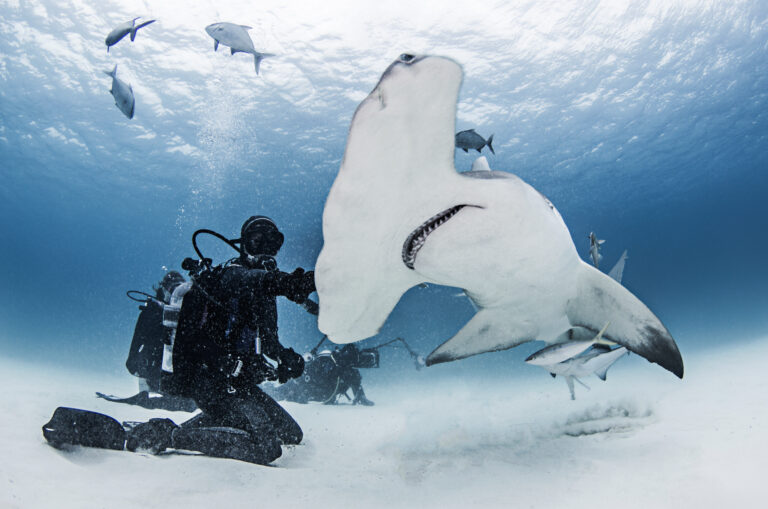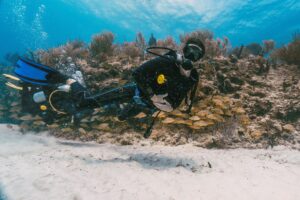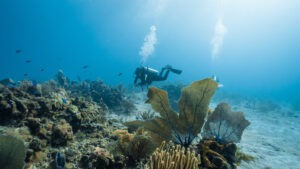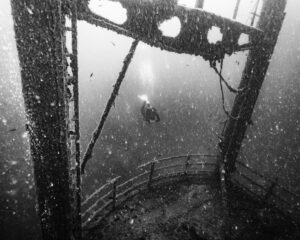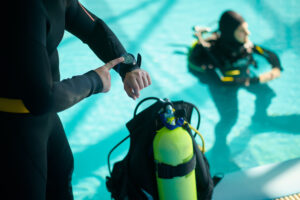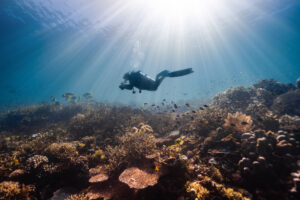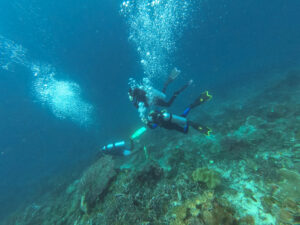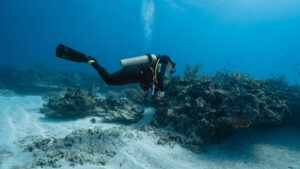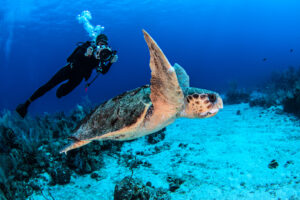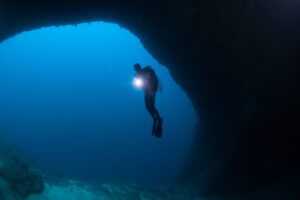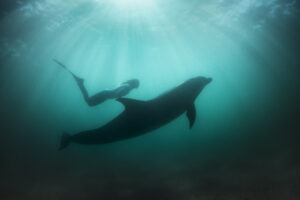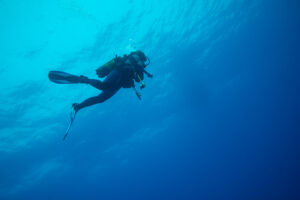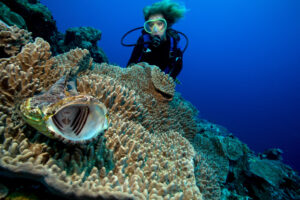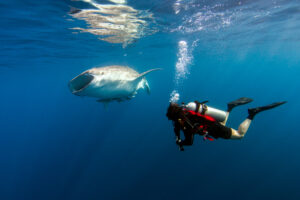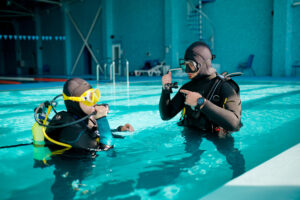What is a Dropoff?
A dropoff in scuba diving refers to a steep underwater slope or cliff that descends sharply from a relatively shallow area to much deeper waters. These underwater geological features are significant for divers due to their dramatic landscapes and the rich marine life they often host. Dropoffs are found in various parts of the world and are treasured for their breathtaking views and the unique diving experiences they offer. These areas are not only visually striking but also ecologically vital, serving as habitats for a wide variety of marine species.
Geological Formation of Dropoffs
Dropoffs are formed through various natural geological processes over millions of years. One common way they form is through the erosion and weathering of coastal areas. As waves and currents constantly batter against the shore, they gradually wear away softer materials, leaving behind harder rock formations that can create steep underwater cliffs. Additionally, tectonic activity, such as the movement of the Earth’s crust, can cause the seabed to fracture and shift, leading to the formation of dropoffs. Volcanic activity also plays a role; when underwater volcanoes erupt, they can create steep slopes and cliffs as the lava cools and solidifies.
Continental shelves are another key feature associated with dropoffs. These shelves are submerged landmasses that extend from a continent’s coastline, gradually sloping downwards before plunging abruptly into the deep ocean. The edges of these shelves often form significant dropoffs. Coral reefs are also notable for creating dropoffs, particularly in tropical and subtropical regions. Over time, coral polyps build massive reef structures that can rise steeply from the seabed, resulting in dramatic vertical walls.
These geological formations are fascinating not only for their creation processes but also for their structural variety. Some dropoffs are characterized by vertical walls that seem to drop straight down into the abyss, while others have more gradual slopes interspersed with terraces and ledges. The diversity in structure contributes to the diverse ecosystems they support, making each dropoff a unique underwater environment.
Ecological Significance
Dropoffs are ecologically significant due to the rich and diverse ecosystems they support. The steep gradients of these underwater cliffs create a variety of habitats that cater to different marine species. The upper regions of dropoffs, where sunlight penetrates, are often teeming with life. Here, divers can encounter vibrant coral reefs bustling with an array of colorful fish, invertebrates, and plant life. These areas serve as crucial feeding and breeding grounds for many marine organisms.
As you descend further along a dropoff, the environment changes, and so does the marine life. The middle regions of a dropoff are typically populated by larger pelagic species, such as sharks, tuna, and barracudas, which patrol these waters in search of prey. The presence of such predators is indicative of a healthy ecosystem, as they play a critical role in maintaining the balance of marine populations. Additionally, the crevices and ledges found in these mid-depth areas provide shelter for various species, including moray eels, lobsters, and octopuses.
The deeper parts of dropoffs, often shrouded in darkness, are home to some of the ocean’s more mysterious inhabitants. Deep-sea corals, sponges, and bioluminescent organisms thrive in these cold, nutrient-rich waters. These species have adapted to the extreme conditions of the deep ocean, where light is scarce, and pressure is immense. The unique environmental conditions of dropoffs make them hotspots of biodiversity, supporting complex food webs and contributing to the overall health of the marine environment.
Popular Dropoff Locations Worldwide
Several dropoff locations around the world are renowned for their beauty and biodiversity, attracting divers from all corners of the globe. One of the most famous is the Blue Hole in Belize, a giant marine sinkhole that forms a nearly perfect circle. The Blue Hole’s steep walls descend over 120 meters (393 feet), offering divers a spectacular view of stalactites and marine life.
Another notable dropoff is the Great Barrier Reef in Australia. Stretching over 2,300 kilometers (1,429 miles), this reef system is home to numerous dropoffs that showcase vibrant coral formations and a diverse range of marine species. The Ribbon Reefs, in particular, are known for their dramatic dropoffs and clear waters, providing excellent visibility for divers.
In the Pacific, Palau’s Blue Corner is celebrated for its exhilarating drift dives along steep dropoffs. Strong currents sweep divers along the edge of the reef, where they can observe large schools of fish, sharks, and other pelagic species. The nutrient-rich waters of Blue Corner support a thriving ecosystem, making it a must-visit destination for experienced divers.
The Red Sea is also home to some impressive dropoffs, with Egypt’s Ras Mohammed National Park being a prime example. The Shark and Yolanda Reefs feature vertical walls that plunge into the depths, covered in soft corals and swarming with marine life. The combination of stunning underwater landscapes and abundant biodiversity makes this area a top spot for divers.
Scuba Diving at Dropoffs
Diving at dropoffs requires specific equipment and skills to ensure a safe and enjoyable experience. Standard scuba gear includes a mask, snorkel, fins, wetsuit or drysuit, buoyancy control device (BCD), regulator, and tanks. However, due to the depth and potential hazards of dropoff diving, additional equipment such as a dive computer, redundant air supply, and surface marker buoy is highly recommended.
Proper training and certification are crucial for diving at dropoffs, especially for those planning to venture into deeper waters. Advanced Open Water Diver certification or equivalent is typically required, as it provides divers with the skills needed to manage deeper dives and potential hazards like strong currents and nitrogen narcosis. Specialized training in deep diving and drift diving can further enhance safety and enjoyment.
Safety considerations are paramount when diving at dropoffs. Divers should always plan their dives meticulously, taking into account factors such as depth, bottom time, and air supply. Monitoring dive profiles with a dive computer helps prevent decompression sickness, while maintaining good buoyancy control is essential to avoid unintended descents or ascents. It is also important to be aware of the environment and avoid damaging the delicate marine life found on dropoffs.
During a dive at a dropoff, divers can expect to encounter a wide array of marine life and stunning underwater topography. The dramatic vertical walls are often covered in colorful corals, sponges, and sea fans, providing a vibrant backdrop for observing fish and invertebrates. Schools of fish, from small reef species to larger pelagic predators, are common sights, as are sea turtles, rays, and occasionally, sharks. The sense of depth and scale at a dropoff is unparalleled, offering a unique perspective of the underwater world.
Challenges and Risks Associated with Dropoff Diving
Diving at dropoffs presents several challenges and risks that divers must be prepared to handle. One of the primary dangers is strong currents, which can be unpredictable and difficult to navigate. Currents can vary in strength and direction, making it essential for divers to stay aware of their surroundings and use proper techniques to manage drift diving. Planning dives during slack tide, when currents are weakest, can help mitigate this risk.
Another significant risk is disorientation, especially when diving along vertical walls where there are few visual references. Divers can easily lose track of their depth and direction, increasing the risk of exceeding safe dive limits or becoming separated from their dive group. Using a dive computer and regularly checking depth and air supply are crucial practices to maintain orientation and safety. Additionally, staying close to the reef wall and using natural landmarks can help divers navigate more effectively.
Nitrogen narcosis is another concern when diving at deeper dropoffs. This condition, caused by the increased partial pressure of nitrogen at depth, can impair judgment and coordination, leading to potentially dangerous situations. To minimize the effects of nitrogen narcosis, divers should limit their depth, ascend to shallower depths if they start feeling symptoms, and avoid making critical decisions while affected.
Marine life interactions also pose potential risks. While encounters with larger predators like sharks are generally safe, it is essential to maintain a respectful distance and avoid provoking these animals. Some marine species, such as lionfish and scorpionfish, possess venomous spines that can cause serious injury if touched. Divers should exercise caution and refrain from touching or disturbing marine life to prevent accidents.
Conservation and Protection Efforts
The conservation and protection of dropoff environments are vital for preserving their ecological integrity and ensuring they continue to provide habitat for diverse marine life. Dropoffs, like other marine ecosystems, face threats from human activities such as overfishing, pollution, and climate change. Overfishing can deplete fish populations and disrupt the delicate balance of the ecosystem, while pollution, particularly from plastic waste, can harm marine species and degrade habitat quality.
Marine protected areas (MPAs) are one of the most effective tools for conserving dropoff ecosystems. By restricting certain activities, such as fishing and tourism, MPAs provide a safe haven for marine life to thrive. Establishing and enforcing MPAs around significant dropoff locations can help safeguard these environments from overexploitation and degradation. Additionally, sustainable tourism practices, such as regulating the number of divers and promoting responsible behavior, can reduce the impact of diving activities on dropoff ecosystems.
Public awareness and education are also crucial for the conservation of dropoffs. By raising awareness about the importance of these environments and the threats they face, individuals and communities can be motivated to take action to protect them. Educational programs, outreach initiatives, and citizen science projects can all contribute to a greater understanding and appreciation of dropoff ecosystems, fostering a sense of stewardship among divers and the general public.
Key Takeaways
Dropoffs are fascinating underwater features that offer both thrilling experiences for divers and vital habitats for marine life. Understanding their geological formation, ecological significance, and the unique challenges they present is essential for appreciating their role in the marine environment. As popular dive sites around the world, dropoffs attract divers with their stunning scenery and diverse ecosystems. However, they also require
careful management and conservation efforts to ensure their protection. By recognizing the importance of these underwater cliffs and promoting sustainable practices, we can help preserve them for future generations to enjoy and study.

